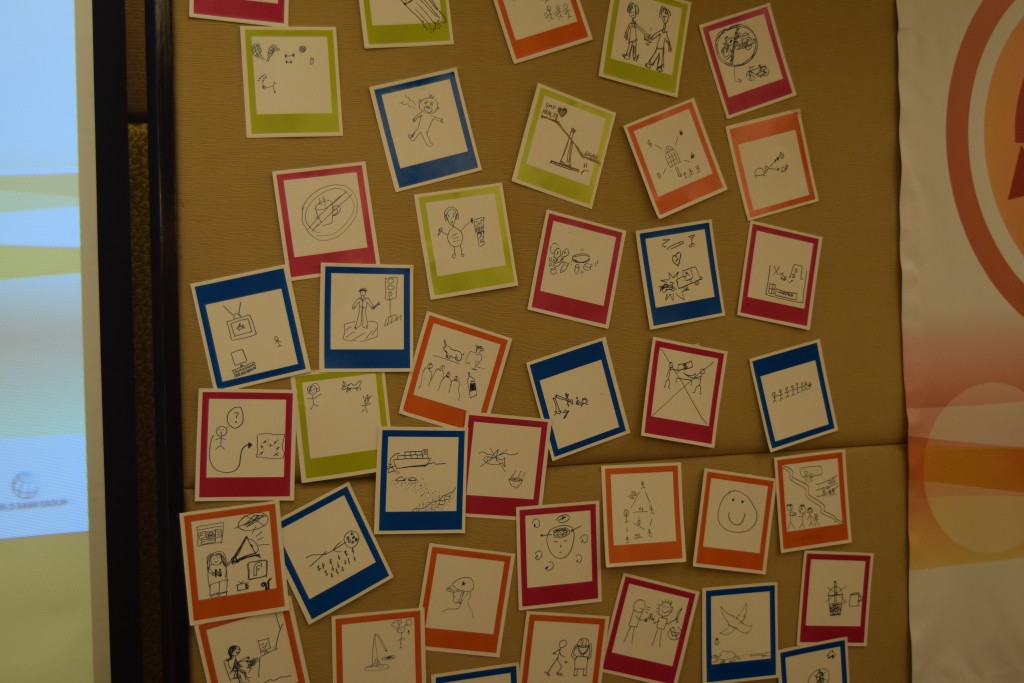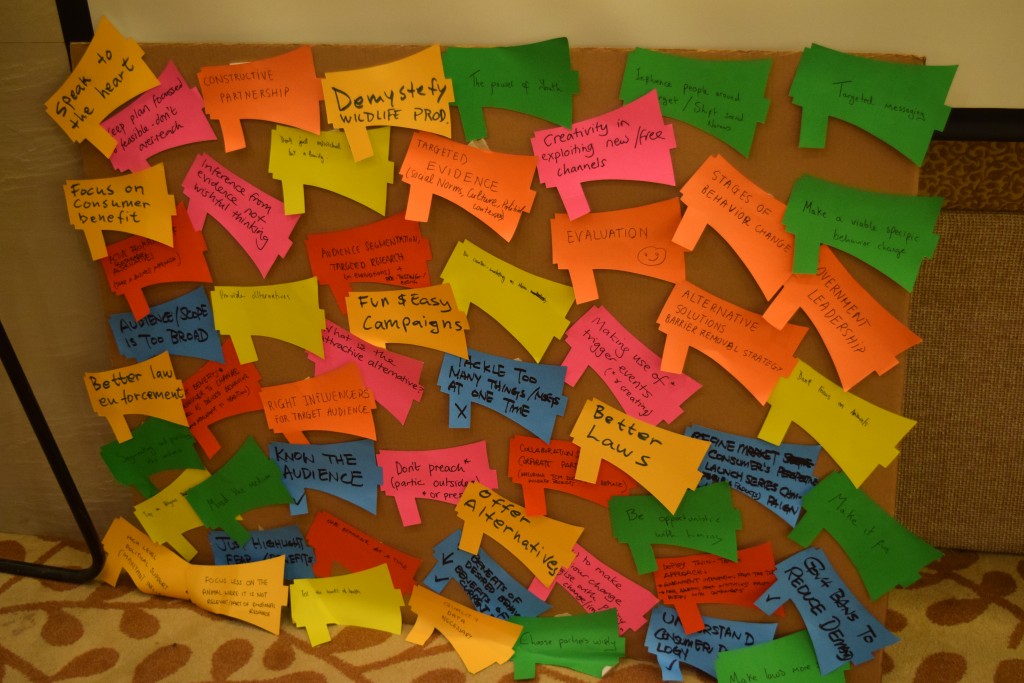You’ve seen the mighty basketball player’s pitch to save elephants, and Li Bing Bing’s “Say no to ivory” social media blitz, but how many of us know how reducing demand works, and more importantly, is it actually working?
In March, I visited Hong Kong to attend a meeting entitled “Changing Behavior to Reduce Demand For Illegally Traded Wildlife Products.” The meeting, organised by TRAFFIC was a chance for many to reflect on how to truly change behaviour, and what demand reduction campaigns should look like with the changing demographics of ivory buyers. After my 2014 trip to five cities in China, I have kept my finger on the pulse of all things demand, knowing that at the heart of it, people can change, and if that is so, then demand can diminish, just as it it did in Europe and Japan in the 1990s.
The workshop brought together many NGOs working in the region, such as WildAid, WSC, IFAW, WWF together with market research companies, academics and people working in the social psychology field. It was a quirky setting, with participants drawing pictures of behaviour they have changed in their lives, writing song lyrics and pitching their best ideas to each other. It was all in an effort to distil and crystalise best practice from participants on what they felt would be the key to unlocking demand for wildlife products in the far east.
The group heard presentations form various experts, some advocating for more academic rigour in survey techniques, others showing the power of fun and simple messages, while other proposed novel ways of swapping one behaviour for another, helping people take up alternatives. Instead of viewing the consumers in a negative light that builds walls around them, shrouding them from our view, participants were encouraged to think of our own ability or inability to change what we like to do, and think of convincing ways to change these consumers, or to reach speculators.
One academic approach that resonated with STE was the Reasoned Action Approach(Fishbein & Aizen 2011). This involves changing a behavioural belief like giving someone information that will change their personal evaluation that the behaviour will yield positive effects such as telling someone ivory buying is a bad investment, which of course is true! Alternatively, one could change how people around you view your behaviour. This is the core of changing a social norm, making it unacceptable, dumb and unintelligent to buy ivory. Perhaps one could change the belief or information available about certain environmental factors that an facilitate the behaviour. An example of this would be increase awareness on the serous law enforcement consequences that await buyer of illegal ivory.
By and large, the conference was a great success, with many organisations beginning to collaborate, and align in their thinking about how to reduce demand for good. The wonderful news of a further ivory price drop was celebrated, proving that all the work that’s been done so far has at least had some effect!
Let’s see what the future holds for complete shut down of ivory markets, and the end to demand that has done more than enough damage to the elephants of Africa. Onward and Upward!



